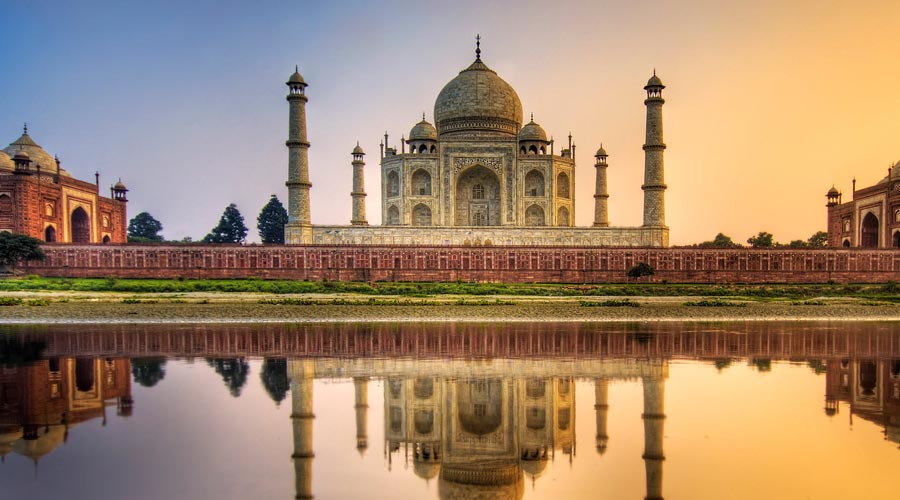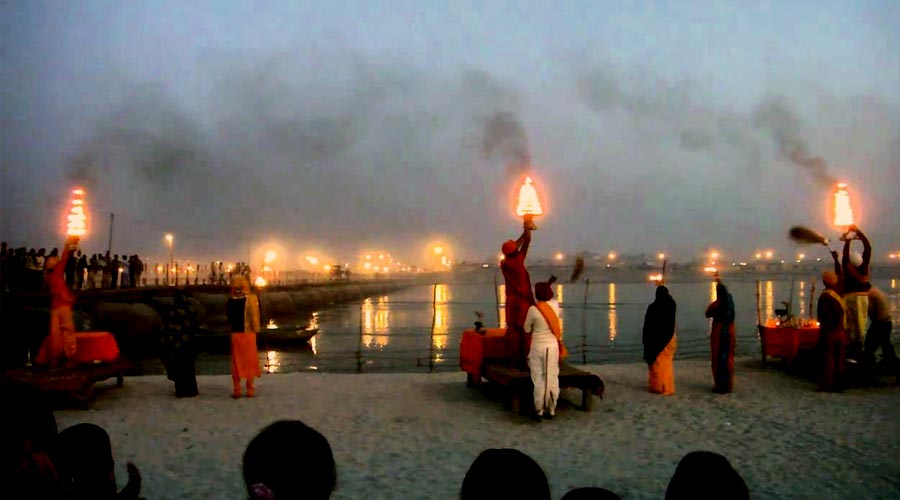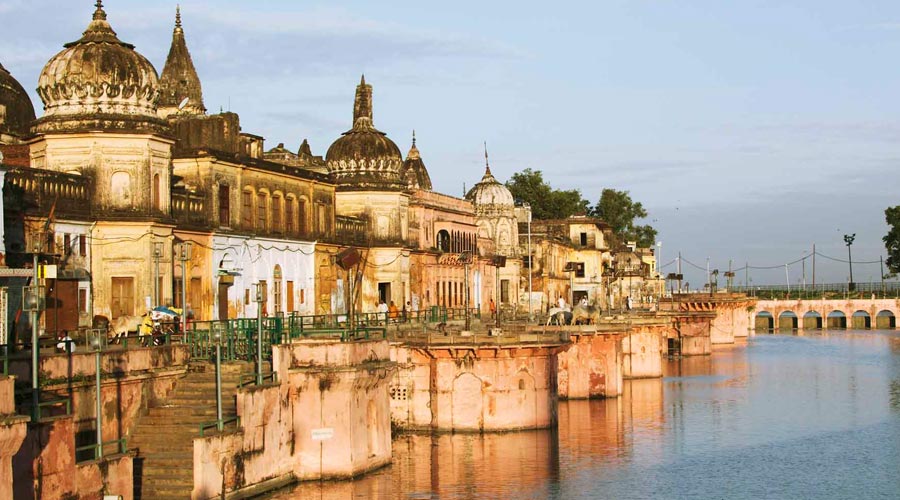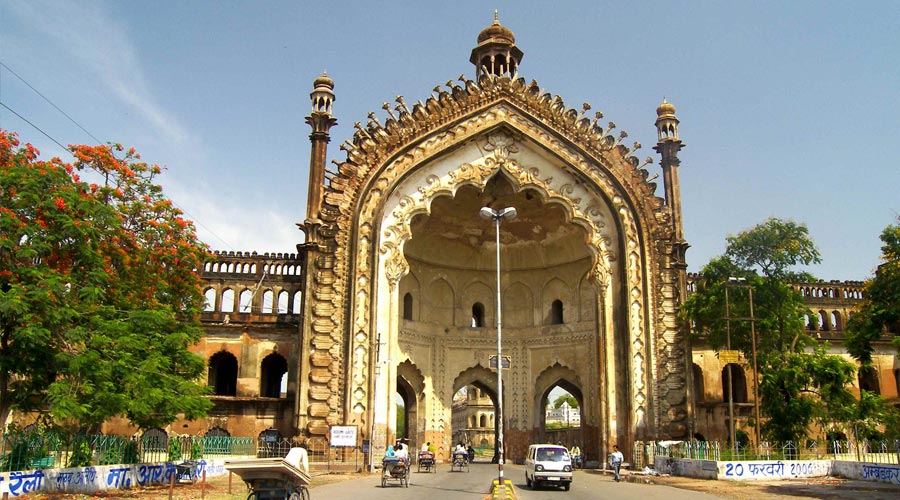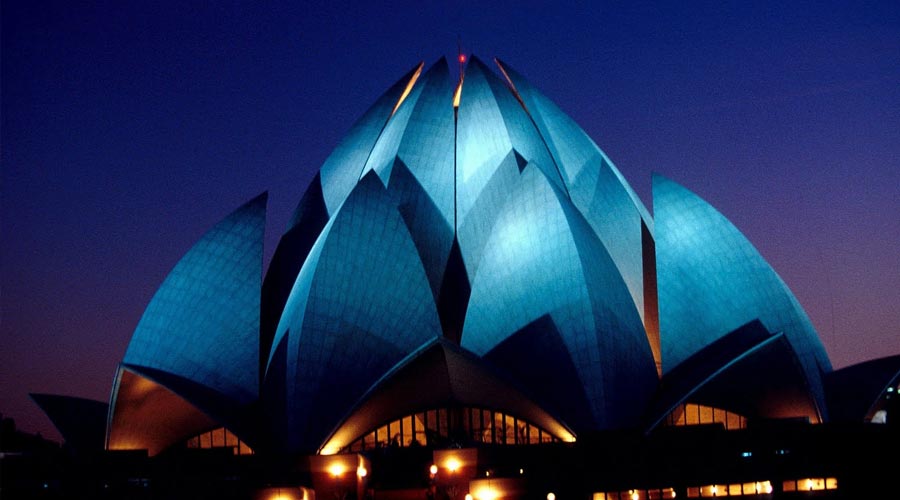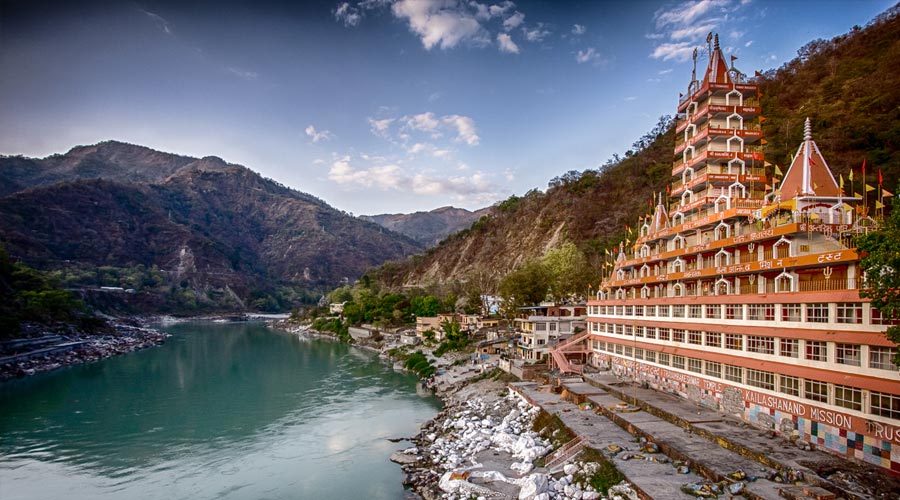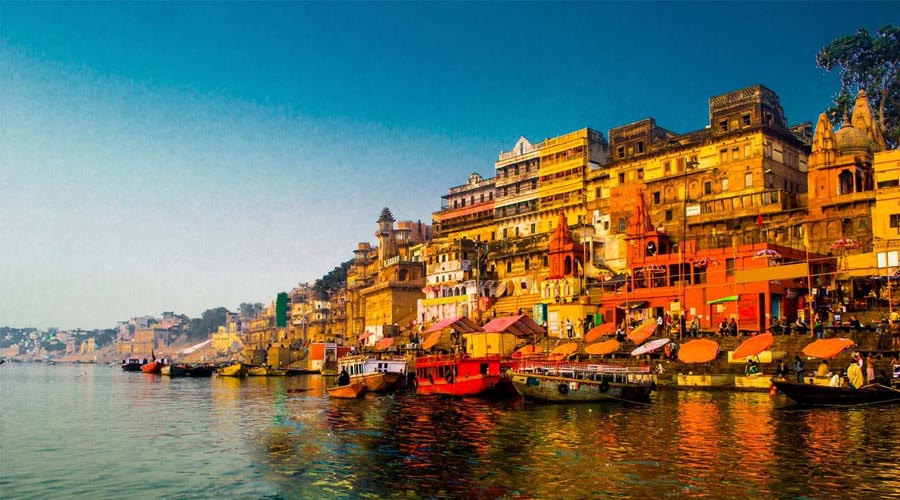Destinations: Delhi-Varansai-Allahabad-Ayodhya-Lucknow-Agra-Delhi-Haridwar-Rishikesh-Delhi.
ITINERARY
Day 1: Delhi
After reaching Delhi airport or railway station, Transfer to the pre-booked hotel. Overnight at Hotel
Day 2: Delhi
Morning afterbreakfast proceed for a sightseeingtour of the city. Drive to New Delhi, which reflects the legacy the British left behind. New Delhi also marks the division in the life-styles and the division in the walled city.
Visit QutubMinar, the tallest stone tower in India and Humayum Tomb, built in 1570, is of particular cultural significance as it was the first garden- tomb on the Indian subcontinent.
Drive past the imposing India Gate, the Parliament building, RastrapathiBhawan and the President’s residence. Visit the Lotus temple made of marble, cement, dolomite and sand.
Afternoon visit to Raj Ghat, a memorial to Mahatma Gandhi, drive past the Red Fort continuing to the Jama Masjid by bicycle rickshaws, one of Asia’s largest mosques. The magnificent Red Fort, overlooking the river Jamuna was built during the years 1638- 48 when the Mughul Empire was at its peak. Enjoy the rickshaw ride at Old Delhi. Overnight at Hotel.
Day 3: Delhi-Varanasi
Morning after breakfast ,proceed to airport to board the flight for Varanasi.
Varanasi is one of the most ancient living cities in India. From time immemorial it has been a great religious center for Hindus and one of their most sacred places of pilgrimage, being visited by millions of people every year. To every visitor Varanasi offers a breathtaking experience.
Visit Sarnath for a day excursion: One of the holiest Buddhist sites in the world, where Buddha preached his first Sermon in 590 BC. Here he revealed the eight fold path that leads to the attainment of inner peace, Enlightenment and Ultimate Nirvana. Witness the ruins of a once flourishing Buddhist monastery and visit a fine Museum which houses an excellent collection of Buddhist art and sculptures found at the site. In the evening visit the Ghats for the evening ceremony .Overnight at Hotel.
Day 4: Varanasi
Morning drive to DaswamedhGhat and take a boat ride on the sacred river Ganges and witness the living traditions of one of the world’s oldest and most important religion. Board a boat and proceed to the middle of the river, where at sunrise the sight unfolds before you. Thousands of faithful come daily to the banks to bathe and pray while in the background, temples and palaces rise in tiers from the water’s edge.
Walk through the cobblestone street along the banks of river Ganga. Visit the KashiVishwanath Temple while returning to the hotel.
After Breakfast Proceed for day tour of Varanasi. Visit Bharat Mata Temple.The 18th century Durga Temple, commonly known as the Monkey Temple due to the huge population of the monkeys. Proceed to the Tulsimanas Temple, crafted from white marble which features the entire Ramayana inscribed on its walls. The Banaras Hindu University considered as the biggest residential university in Asia. The University Campus houses an Art Gallery and the Mosque of Mughal Emperor Aurangzeb. Overnight at Hotel.
Day 5: Varanasi-Allahabad
Morning drive to Allahabad. Arrive Allahabad,check in to the Hotel.
Allahabad is located on the meeting point of the rivers Ganges and Yamuna. The city of Allahabad with a strong and long historical, political and religious past, is in itself one of the greatest tourist attractions. It draws huge crowds every year. Allahabad today is an important city where history, culture and religion create a confluence much like the sacred rivers that cares this god graces land. It is also known as Prayag and is one of the sacred pilgrimage centres of India.
Afternoon half-day sightseeing of Allahabad. Visit Sangam ,It is the confluence of three holy rivers-Ganga, Yamuna, and Saraswati. It becomes a center of attraction for hundreds and thousands of religious travelers after every twelve years when it hosts the famous KumbhMela.
Allahabad Fort, Built by Akbar in AD 1583, exhibits fine depictions of art, design, architecture, and craftsmanship of the fort.An amazingly beautiful view of the fort can be seen from the river side. Visitors are allowed to view the Ashoka Pillar, SaraswatiKup and Jodhabai Palace.Patalpuri Temple and AkshayaVat,located inside the Allahabad Fort, this is actually an underground temple, alluding to associations with Lord Rama. The famous Akshaya Vat one of the most revered trees of the Hindus is also sited within the temple.Hanuman Mandir,located near the Allahabad Fort, is famous for the image of the reclined position monkey-god Hanuman.
Allahabad Museum, preserves the paintings of Nicholas Roerich, terracotta figurines, Rajasthani miniatures, coins and stone sculptures from the 2nd century BC till date. Overnight at Hotel.
Day 6: Allahabad-Ayodhya-Lucknow
In the morning, drive toAyodhya.
Ayodhya is a small temple town. It is scenically located on the southern bank of mighty River Saryu. It is one of the oldest cities of not just India but possibly of the entire world.
Ayodhya is famous for the temples dedicated to Lord Rama and other deities of Hindu Pantheon. The ancient city of Ayodhya, according to the Ramayana, was founded by Manu, the law-giver of the Hindus. For centuries it was the capital of the descendants of the Surya dynasty, of which Lord Rama was the most celebrated king.
On arrival visit, Ram Janmabhumi, the birthplace of Lord Rama.The place is considered to be the birthplace of Lord Ram the 7th incarnation of Lord Vishnu. The original temple was said to have been demolished by the Mughal emperor Babur in 1528 AD and built a mosque at the site.
Kala Ram Temple, KanakBhavan Temple,was gifted to Sita immediately after her marriage by Lord Ram’s step mother Kaikeyi. The temple was later renovated by King Vikramaditya of the Paramara dynasty and again rebuilt in 1891. Hanuman Garhi is one of the most famous temples in Ayodhya, dedicated to the mighty Monkey God Lord Hanuman and was built by the Nawab of Awadh. The temple is characterized by the 70 steep steps that should be scaled in order to reach the temple complex. The temple is best visited during any major Hindu festival. Later drive to Lucknow by road. Reach Lucknowand check in at the Hotel.
Lucknow, the city of Nawabs is famous for its culture and culinary. It has a laid back image and the favorite pastime of people in the city is to sit across any of its numerous food-joints & gossip.
Overnight at hotel.
Day 7: Lucknow – Agra
Morning visit Rumi Darwaza the most impressive gateways, was commissioned under the ‘Food for Work’ program initiated by the Nawab to bring respite to the city that was suffering from famine . The Rumi Darwaza is an example of the fine architectural style of Awadh.
BadaImambara has historical, cultural and heritage importance.The complex also includes the large Asfi mosque, the Bhul-Bhulayah (the labyrinth) and a summer palace with running water.
JamaMasjid was built entirely with yellow sandstone and is known for its intricate style of design and architecture.
The MotiMahal in Lucknow is one of the most beautiful monuments of India and is known as Palace of Pearls. The MotiMahalprovides a spectacular view of the city of Nawabs. The Nawabs used this palace to view birds in flight and spend time in leisure.
MotiMahal is preserved till date by the concerned authorities and is one of the most popular place .
The Government museum has separate galleries dedicated to sculptures, bronzes, paintings, natural history and anthropological specimens, coins, textiles and decorative arts. In the evening, board an overnight train to Agra.
Day 8: Agra
Arrive at Agra railway station and transfer to the hotel. After Breakfast Proceed for sightseeing .
Agra is caught up in a world of contrasting edifices, of red sandstone and white marble, narrow galleys and quaint buggies, and irresistible charm that this favorite city of the Mughals still retains. Modern Agra still reflects its Mughal heritage most conspicuously.
Afternoon visit of Agra Fort. Built by Mughal emperor Akbar in 1565 AD, the fort is predominantly of red sandstone. It lies on the bend of the river Yamuna, almost in the heart of the town. Akbar built it as his citadel over the years 1563-73 in the finest architectural style. It has imposing gates and walls of red sandstone and a moat.
Itmud-Ud-Duala is the very first tomb in India that is entirely made out of Marble. This is actually a mausoleum that overlooks the River Yamuna and is a tomb of Mir Ghiyas Beg, a minister in the court of Shah Jahan.Sikandra (the Tomb of King Akbar). Akbar himself planned his own tomb and selected a suitable site for it, after his death, Akbar’s son Jahangir completed the construction in 1605-1613.
A walk down the narrow bustling streets of the city will introduce the visitor to the wafting aroma of Mughlai cuisine. Overnight at Hotel.
Day 9: Agra-Mathura-Delhi
Proceed for a sunrise view of the TajMahal.The epitome of love and romance, TajMahal was built by the Mughal Emperor Shah Jahan as a dedication to his beautiful wife MumtazMahal.
The Taj is a white marble memorial to his beautiful wife MumtazMahal. Apart from its stunning design balance and perfect symmetry, the Taj is also noted particularly for its elegant domes, intricately carved screens and some of the best inlay work ever seen. Return back to the hotel for breakfast.
After breakfast drive to Delhi. On the way, stop at Mathura and Vrindavan. Both the places are related with the birth and childhood of Lord Krishna.On reaching Delhi, Check in at the hotel for night stay.
Day 10: Delhi- Haridwar-Rishikesh
Early morning drive to Haridwar. It is on the banks of River Ganges (Ganga) and located at the foothills of the lower Himalayan Range of the Shivalik mountains. It is an important pilgrimage site for Hindus. When the Ganges leaves the mountains and enters the plains, Haridwar is the first major town on the plains. Haridwar has earned fame as being the place, which has been blessed by the trinity of the Lords Shiva, Vishnu and Brahma.
It is also one of the major Shaktipeeths. Down the ages, Haridwar has purified the mind, the body and the soul of people not only in spiritual or religious terms but as a major learning centre for arts, science and culture. Upon arrival check-in the hotel. Afternoon visit Mansa Devi temple and in the evening enjoy the ‘Aarti’ at Har Ki Pauri with the spectacular view of the Ghat. Overnight at hotel.
Day 11: Rishikesh
Begin with full day excursion of Rishikesh, a very important Hindu pilgrimage site. It is also a cluster of number of Ashrams and temples giving the entire place a spiritual feeling. The ceaseless flow of the river, regarded as Goddess Ganga adds to the beauty and the purity of the place. Along the river, the area is filled with thick green forests in the all-mountainous region. Rishikesh is famous for its yoga sessions that are taught here by many yoga experts. Visit LaxmanJhula, Ram Jhula, GeetaBhawan and other temples & ashrams, Later in the evening drive back to Haridwar for an overnight stay.
Day 12: Delhi
In the morning, drive to Delhi. Check in to the Hotel. Afternoonvisit Lotus Temple, Akshardam Temple. Overnight at hotel.
Day 13: Delhi
Morning Transfer to International airport to board a flight for onward journey.

